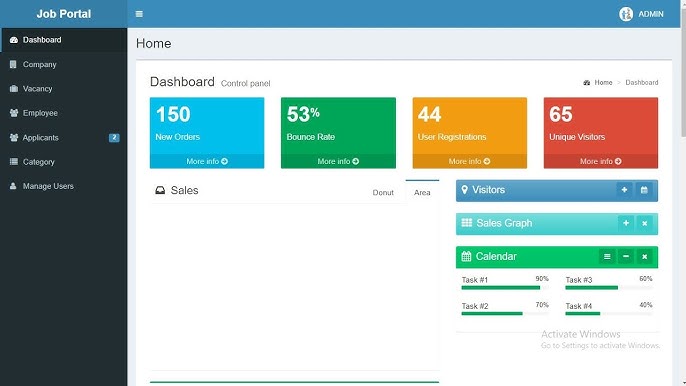Contents
Understanding /portal.php
/portal.php is an integral component of many web applications, serving as a gateway for users to access various resources and functionalities. This dynamic file functions as a bridge between the user interface and the server-side logic, processing data requests and delivering information accordingly. The role of /portal.php in web applications is crucial, as it not only manages user inputs but also facilitates the secure exchange of information between clients and servers.
The data processed by /portal.php can range from simple user credentials to complex data sets that may require authentication and authorization processes. By effectively managing these interactions, /portal.php enhances the overall user experience, providing users with efficient access to the tools and information they need. It plays a significant role in ensuring that users can navigate the application seamlessly, thereby streamlining operations and minimizing frustration associated with data retrieval and input.
The significance of /portal.php lies in its ability to adapt to different operational needs, thereby enhancing accessibility for users regardless of their technical proficiency. By providing a user-friendly interface and integrating various functionalities, /portal.php effectively supports diverse business models, ultimately leading to improved user engagement and satisfaction.
Key Features of /portal.php
/portal.php emerges as a vital tool for a range of web environments, offering a variety of features that elevate its functionality and user experience. One of the standout aspects of this portal is its robust security measures. Built with several layers of protection, /portal.php ensures the safety of user data through encryption protocols and regular security updates. These features make it a reliable choice for organizations that prioritize data security and user privacy.
In addition to its security protocols, the user interface of /portal.php is designed with accessibility in mind. The intuitive layout enhances the overall user experience, allowing users to navigate through various sections with ease. Customization options are also abundant, providing developers the flexibility to tailor the portal’s appearance and functionalities to meet specific needs. This adaptability not only makes /portal.php user-friendly but also empowers organizations to create a personalized environment that aligns with their branding and operational requirements.
To further contextualize the strengths of /portal.php, it is essential to compare it with other similar portals available in the market. While many portals offer basic functionalities, /portal.php stands out due to its comprehensive suite of tools that facilitate easier integration with other systems. This level of compatibility enhances its appeal, particularly to developers who seek seamless interoperability between different platforms.
Moreover, the community support surrounding /portal.php contributes significantly to its robustness, offering a wealth of resources, including documentation, forums, and user guides. These resources provide additional value, assisting users and developers in troubleshooting issues and maximizing their utilization of the portal. Overall, the combination of security, usability, and customization potential makes /portal.php an essential component for web environments aiming to enhance their operational efficiency.
How to Integrate /portal.php into Your Workflow
Integrating /portal.php into your existing systems requires careful planning and execution to ensure compatibility and functionality. To begin with, identify the specific aspects of your workflow that will benefit from the features provided by /portal.php. A clear understanding of your objectives will streamline the integration process.
The first step in technical integration involves assessing your current system architecture. Understanding the coding requirements is crucial, as /portal.php typically utilizes specific programming languages and frameworks. Begin by reviewing the documentation provided with /portal.php to familiarize yourself with its API, libraries, and functions. This knowledge will be essential when writing custom code to interact with the portal.
Next, you will need to configure various settings within your system to accommodate /portal.php. This may involve updating configuration files, database connections, and environment variables. It is essential to ensure that all dependencies are met to avoid any runtime errors. Utilize version control tools to track your changes and allow for easier debugging and troubleshooting.

During integration, common issues may arise, such as compatibility errors or incorrect API calls. To address these challenges, maintain a log of encountered issues along with proposed solutions. Setting up a testing environment can facilitate the identification of potential problems before deploying /portal.php in a live scenario. Running through various use cases will provide insights and ensure that the integration meets all specified requirements.
Furthermore, consider best practices for a smooth integration. These include documentation of all steps taken during the process, regular backups of your current system, and continuous feedback loops for iterative improvements. By following these guidelines, your project can maximize the advantages offered by /portal.php and become a pivotal tool within your workflow.
Future Trends and Updates for /portal.php
The landscape of online platforms is ever-evolving, and /portal.php is no exception. Emerging trends in technology, user preferences, and data security are set to significantly influence the future iterations of this portal. One key trend is the increasing integration of artificial intelligence (AI) and machine learning (ML) capabilities. These technologies enable enhanced personalization for users, allowing the portal to tailor content and services based on individual user behavior. As AI continues to advance, we can expect /portal.php to adopt smarter algorithms to improve user experience and streamline processes.
Additionally, the shift towards mobile-first design is becoming increasingly prominent. With a growing number of users accessing services on their smartphones and tablets, developers of /portal.php must prioritize mobile responsiveness and accessibility. This entails designing a version of the portal that offers equivalent functionalities to its desktop counterpart, ensuring seamless navigation regardless of device type. Future updates may also incorporate progressive web app (PWA) features, making the portal faster and more efficient on mobile devices.
Data security is another significant concern for users of /portal.php. As cyber threats evolve, so must the security measures implemented within the portal. Future updates are likely to include more robust encryption protocols and multi-factor authentication methods to protect user data. Furthermore, regulatory compliance will drive enhancements in the platform’s privacy policies, ensuring transparency and trust for its user base.
To prepare for these changes, developers and users alike should stay informed about industry trends. Engaging with developer communities, following relevant tech news, and participating in forums dedicated to /portal.php can provide valuable insights and foster adaptability. Ultimately, by remaining proactive and informed, everyone involved can successfully navigate the impending advancements of the portal.
You May Also read
